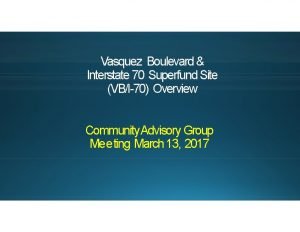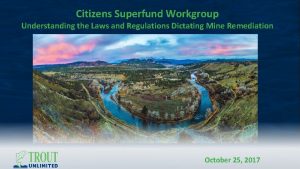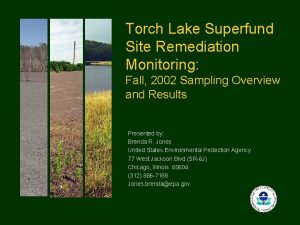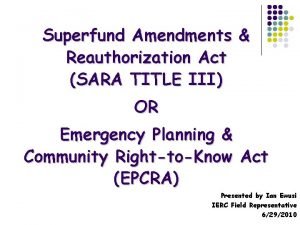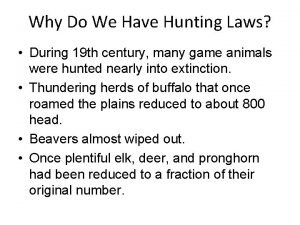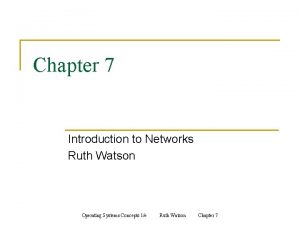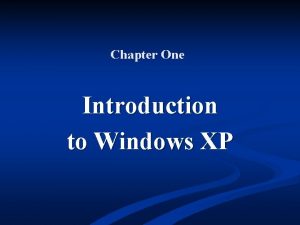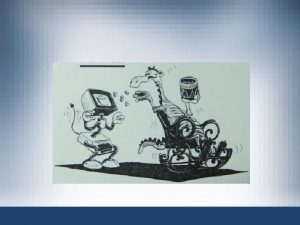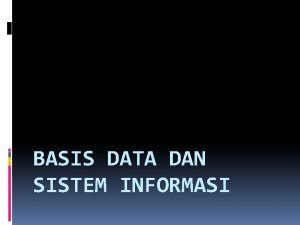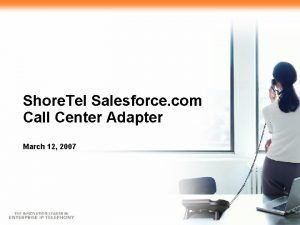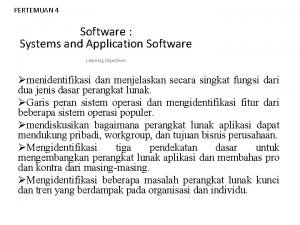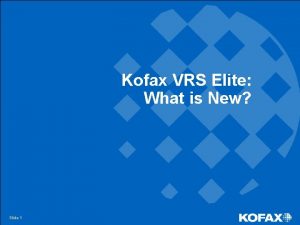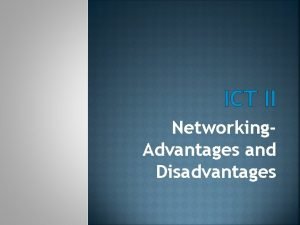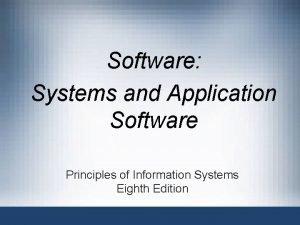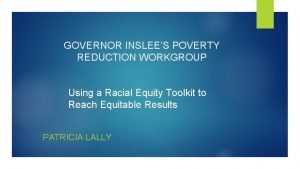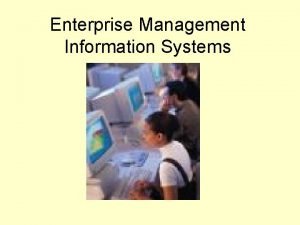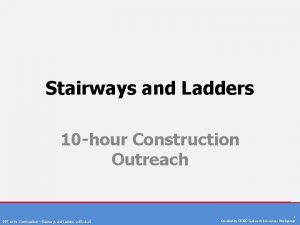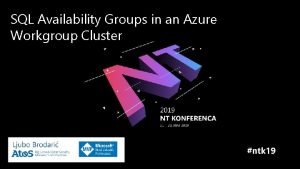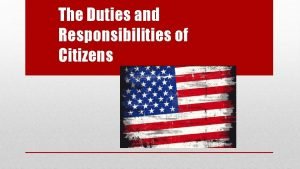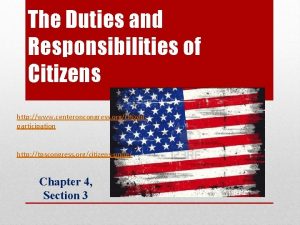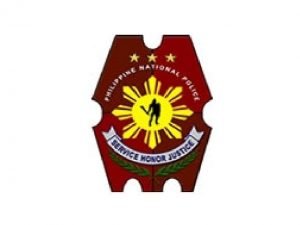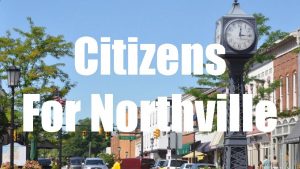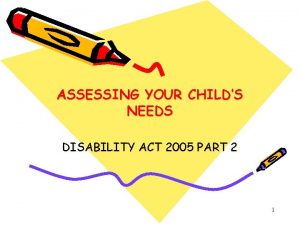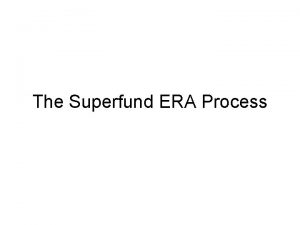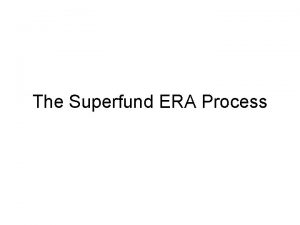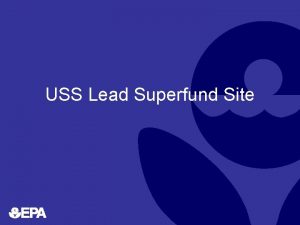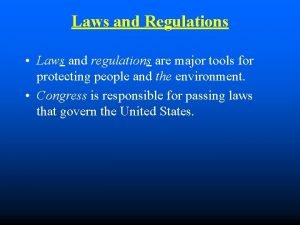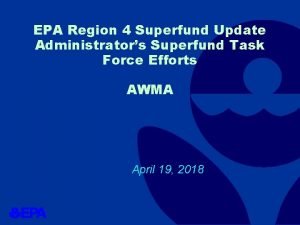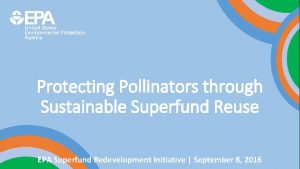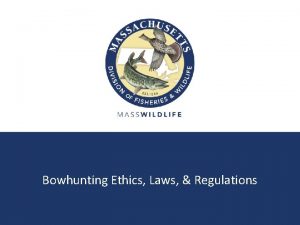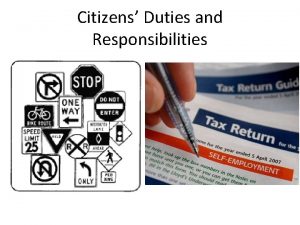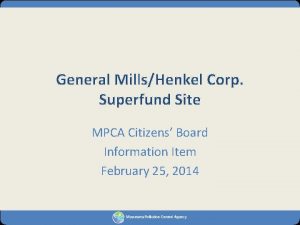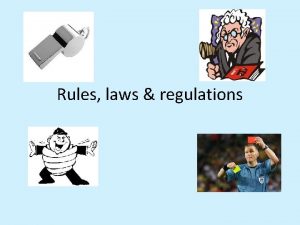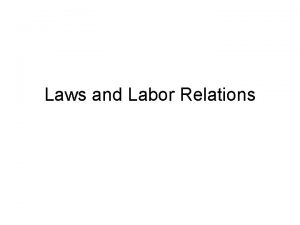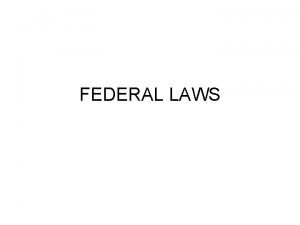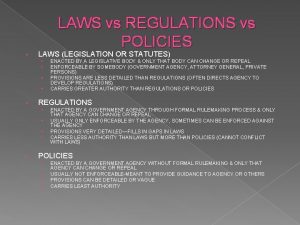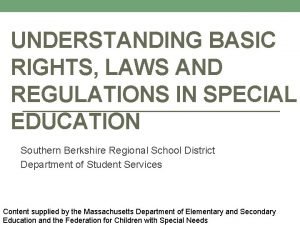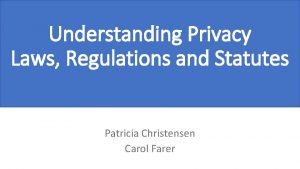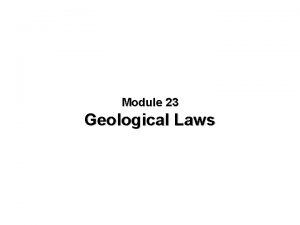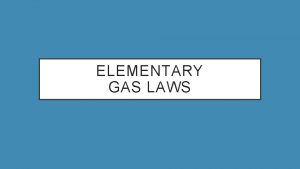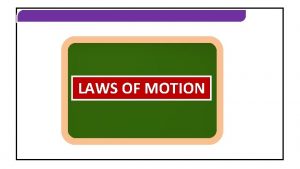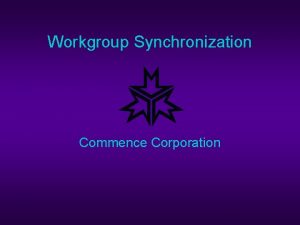Citizens Superfund Workgroup Understanding the Laws and Regulations





























- Slides: 29

Citizens Superfund Workgroup Understanding the Laws and Regulations Dictating Mine Remediation October 25, 2017

Ty Churchwell San Juan Mountains Coordinator Durango, CO tchurchwell@tu. org or 970 -259 -5116 x 11

Disclaimer: Discussions about laws and policies can be challenging, confusing and overwhelming I am not an attorney! We have numerous people in the room who are This information is shared to give a simple overview and in a manner the average non-lawyer can hopefully understand We’ll have ample time at the end of the presentation for Q&A. www. tu. org 3

Purpose of Presentation Overview: Further describe the problem of acid mine drainage in the Animas and the laws that govern cleanups Provide a summary of federal and state laws and policies as tools to assist our workgroup’s effort to create ‘Citizen Goals’ for the BPMD To understand how these laws set-up the framework for the cleanup of the upper Animas Outline where we are in the current Superfund process Review other tools that are not currently available www. tu. org 4

Two Types of Mining Pollution = Different Cleanup Laws • Non-Point-Source • • • Waste rock pile No defined point of pollutant release State & NGOs allowed to perform currently • Point-Source • • www. tu. org Draining mine adit Precise point of pollutant release States & NGOs disallowed to perform currently Good Sam needed here 5

The crux of our problem in the Animas basin • Thanks to the work of Peter and the Animas River Stakeholders Group - in collaboration with state and federal agencies and stakeholders - dozens of non-point-source cleanups (waste rock piles) have been performed near Silverton • This leaves mostly draining mines (point-source) • The Clean Water Act calls out point-source differently than waste rock • POINT SOURCE • • • Where AMD discharges directly from a mine adit This is considered industrial pollution – not ‘soil runoff’ The Clean Water Act requires: • Operator must obtain a pollution discharge permit • AMD must be treated before discharged • Must meet high EPA standard for discharge • Permit and treatment must be maintained as long as pollution source continues to discharge • If pollution source stops, discharge permit may be discontinued In most cases, a draining mine will never stop discharging!!! * www. tu. org 6

General Mining Act of 1872 – Where it began Enacted after the Civil War by President Grant Authorizes and governs prospecting and mining in U. S. – for economic minerals: gold, platinum, and silver – Other minerals such as copper, iron etc. – on federal public lands – fixed the maximum size of lode claims as 1500 feet long and 600 feet wide – Claims could be patented – makes them private property (much the same as the ‘Homestead Act”) – Did NOT establish a royalty system – only extractive industry that doesn't pay a royalty to US citizens for extraction of public resource – Did NOT include bonding or reclamation www. tu. org 7

Mining is our heritage Established the towns we live in Encouraged the expansion of the west Fueled the industrial revolution Built warships and planes for WWI & II Responsible for the D&SNGRR BUT, impacts are still felt today!! www. tu. org 8

Clean Water Act (1972) Prompted by the Cuyahoga River fire in Ohio, and other environmental disasters Prior to the CWA, industry could dump waste directly into a river without permit, treatment or standards To make the waters of the U. S. swimmable and fishable Established the National Pollutant Discharge Elimination System (NPDES) – Permit system – Set standards for discharge www. tu. org 9

Colorado Mined Lands Reclamation Act (1976) State law primarily enforced by the CO Dept. of Reclamation, Mining and Safety (DRMS) It took 100+ years for mining to become regulated MLRA instituted mining and reclamation standards and regulations for NON-coal operations Created a ‘Mined Land Reclamation Board’ to oversee Required to file mining & reclamation permits Post a reclamation bond to guarantee reclamation www. tu. org 10

Resource Conservation and Recovery Act (1976) Principal federal law governing the disposal of solid and hazardous waste Protec human health and the environment from the potential hazards of waste disposal “Cradle to Grave” concept – Directs EPA to establish controls on the management of hazardous wastes from their point of generation, through their transportation and treatment, storage and/or disposal – stringent recordkeeping and reporting requirements on generators, transporters, and operators of treatment, storage and disposal facilities handling hazardous waste. www. tu. org 11

CERCLA – The “Superfund” Law (1980) Comprehensive Environmental Response, Compensation & Liability Act The law that created the “Superfund” “Polluter Pays” principle (PRP) Intended for emergency responses and longterm cleanups at toxic spills, industrial and waste sites with high human health risks Originally funded by tax on the petro-chemical industry Superfund taxes expired in 1995 It is only funded now by Congressional appropriations with taxpayer money www. tu. org 12

CERCLA Cont. Two types of actions: – Short-term removal action: • where actions may be taken to address releases or threatened releases requiring prompt response • Gold King spill response is a removal action – Long-term remedial actions: • permanently and significantly reduce the dangers associated with releases (or threats of releases) of hazardous substances that are serious, but not immediately life threatening • These actions can be conducted only at sites listed on EPA's National Priorities List (NPL) • Establishment of a permanent treatment facility in Gladstone would be remedial action www. tu. org 13

CERCLA Cont. Also used at mining sites – Examples: – Butte, MT – Leadville, CO – Summitville, CO Gives the EPA the authority to assume a site Gives the authority for the EPA to treat mine discharge – After ten years of operation, the state assumes all expense and permitting www. tu. org 14

The Superfund process The process is linear and defined by law We are currently at the “Remedial Investigation” phase Once the ROD is signed, we’ll have little impact on what, when and where actions are taken!! www. tu. org 15

Bonita Peak Mining District Considered (again) after the Gold King spill Town of Silverton and San Juan County requested in winter of 2016 Governor Hickenlooper took the request to D. C. Officially listed on the National Priorities List (NPL) in September of 2016 – There are over 1300 sites on the NPL 48 individual sites listed in the upper Animas – 46 mine sites – 2 study areas www. tu. org 16

Superfund Process Cont. Biological Technical Assistance Group (BTAG) formed and working State & Federal agencies, tribes, NGOs, PRPs and key stakeholders Performing: – Habitat assessments – Baseline Ecological Risk Assessment – Terrestrial BERA – Aquatic Insect Assessments www. tu. org 17

Other tools? ? We are not the only watershed in America impacted by AMD Only the most egregious hardrock mining sites are good candidates for a Superfund cleanup EPA does not have the capacity, man-power or funding to address the massive cleanup of abandoned mine sites across the nation Currently proposed Congressional budget cuts to EPA could exasperate the problem These other tools may or may not assist us in the upper Animas www. tu. org 18

Good Samaritan Legislation (national) Primary objective: – To provide much-needed capacity to EPA cleanups nationwide – To remediate the ‘little bleeders’ that are very low on EPA’s priority, or that do not meet Superfund standards Secondary objectives: – Bring private resources to the effort to address abandoned mines – Bring private funding for cleanups (foundations, not taxpayer money) – Utilize NGO capacity, expertise and resources – Avoid a federal action where it may not make sense www. tu. org 19

Good Sam – The Need • Estimated 500, 000 abandoned hardrock mines in the western U. S. • 40% of western headwater streams impacted by acid mine drainage (AMD) • Only the EPA is suited to address abandoned draining mines • Funding/man power for cleanups is minimal • Often pervasive in small, rural and high mountain counties • Estimated cleanup costs of $9. 6 to $21 billion dollars www. tu. org 20

What sites for Good Samaritan Cleanups? NO Potentially Responsible Party (PRP)!!!! – Gold King, American Tunnel, Mogul and Grand Mogul NOT an option Abandoned & orphaned sites ONLY Smaller discharges: <100 GPM – The “little bleeders” that are not high on EPA’s radar – Bandora and Kohler prime examples Employ engineered wetlands & settling ponds (less expensive than active) – Little maintenance needed – Little to no input of lime – Little to no creation of sludge Where no electricity is needed or where it’s not available www. tu. org 21

Good Samaritans Entities who had no role in creating the pollution, but want to fix it Could include county governments, watershed groups, state mine remediation agencies, non-profits and environmental organizations Often a collaborative effort between entities (ex: non-point source) www. tu. org 22

What does Good Sam do…or not do? Does: – – – – – Increase capacity for cleanups – adds to EPA’s efforts Gives liability relief of permanent responsibility of discharge permit Requires significant EPA/CDPHE oversight and coordination Stringent permitting process Significant bonding requirements Proper engineering and mitigation plan Safety/emergency plan Allows a partial cleanup (high EPA standard relaxed) “Any improvement to water quality over any time period is better than none at all” – Note: Collapsed adits or blockages not likely addressed by Good Sams Does not: – Give anyone with a backhoe willy-nilly access to cleanup or treat water – Give liability relief in the event of an accident, spill or worsening impairment www. tu. org 23

Good Sam Today? ? ? Draft legislation introduced in 2016 (Tipton/Bennet) – Negotiations between Tipton and Bennet have stalled Citizen’s Lawsuit provision the sticking point – Ability of citizens to file suit for damages or permit violations • CWA/CERCLA covers this • Suits are always an option – Concern: further disincentive for Good Sams • Resolution: covered under permitting Challenging Congressional climate Sen. Gardner has stepped up with interest CERCLA approach? www. tu. org 24

1872 General Mining Act Reform Bill introduced in 2017 by Senator Bennet (DCO) and Senators Tom Udall (D-NM), Martin Heinrich (D-NM), Ron Wyden (D-OR), and Edward Markey (D-MA) Set a royalty rate for new operations of 2% to 5% of gross income of new production on federal land Create a Hardrock Minerals Reclamation Fund for abandoned mine cleanup Require an expedited review of areas that may be inappropriate for mining www. tu. org 25

Pending State legislation: Being pursued by Conservation CO, San Juan Citizens Alliance and Earthworks Seeking input from stakeholders now Engaging possible bill sponsors The bill does: – Eliminates ‘self bonding’ – Limits or prevents new mining operations where perpetual water treatment is likely – Requires complete cleanup after operations have concluded with mitigation plan at permitting stage www. tu. org 26

Questions or comments? Thank you! Support Good Samaritan legislation and follow along with the Animas’ Superfund cleanup at: www. We. Are. The. Animas. com www. tu. org 27

www. tu. org 28

www. tu. org 29
 Vasquez boulevard and i-70 superfund site
Vasquez boulevard and i-70 superfund site Superfund act
Superfund act Torch lake superfund site
Torch lake superfund site Superfund titles amended
Superfund titles amended Punjab pure food regulations 2020 pdf
Punjab pure food regulations 2020 pdf Why do we have hunting laws and regulations
Why do we have hunting laws and regulations Diff between workgroup and domain
Diff between workgroup and domain Workgroup vs domain pros and cons
Workgroup vs domain pros and cons Domain vs workgroup
Domain vs workgroup Workgroup sphere of influence
Workgroup sphere of influence Workgroup sphere of influence
Workgroup sphere of influence Workgroup database adalah bentuk database
Workgroup database adalah bentuk database Shoretel salesforce
Shoretel salesforce Off the shelf application software examples
Off the shelf application software examples Kofax vrs administration console
Kofax vrs administration console Essay advantages and disadvantages
Essay advantages and disadvantages Personal application software
Personal application software Jenis sistem informasi
Jenis sistem informasi Poverty reduction workgroup
Poverty reduction workgroup Enterprise information system adalah
Enterprise information system adalah Ladder safety training ppt
Ladder safety training ppt Workgroup cluster
Workgroup cluster Facts about montesquieu
Facts about montesquieu Feb 21
Feb 21 What are the duties and responsibilities of citizens
What are the duties and responsibilities of citizens What are the duties and responsibilities of citizens
What are the duties and responsibilities of citizens Pnp logo and meaning
Pnp logo and meaning National action plan for senior citizens
National action plan for senior citizens Citizens for northville
Citizens for northville Disability act 2005 citizens information
Disability act 2005 citizens information
